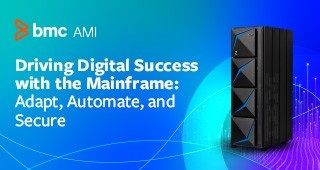The IMS™ catalog contains definitions of IMS databases and application program views. By creating a catalog, IBM has made it easier for non-IMS experts to maintain IMS database and application program definitions. Because the IMS catalog is similar to the DB2 catalog, users who have managed DB2 definitions can easily maintain IMS database and program definitions. Like the DB2 catalog, the IMS catalog can be updated with SQL data definition language (DDL); many technicians who have never worked with IMS before have used SQL and DDL – further simplifying the management of IMS definitions.
The catalog provides several advantages over manual database and program definitions, including:
- Fewer generations (GENs) to implement updated definitions, resulting in less risk and lower costs
- A central repository for all IMS data structures
- Metadata that will make it easier to understand what data is in IMS databases and which applications access that data – and lead to better data consistency and governance
- A comprehensive change management platform with a comprehensive repository for IMS database objects and applications that enables database versioning
- Accessibility from distributed platforms, eliminating the need to recode and maintain local IMS objects and simplifying access to IMS objects on the mainframe
The catalog sounds great. Right? So why are users reluctant to move to it? One reason is that the catalog requires application control blocks (ACBs) to be managed by IMS. While IMS-managed ACBs provide advantages, migrating to IMS-managed ACBs will require process changes and will require the use of the IMS Common Service Layer (CSL). Change can be scary, but it can also be good. Let’s look at what IMS-managed ACBs can do for you:
- Eliminate the need for database definition (DBD), program specification block (PSB), and ACB libraries – because information the IMS catalog determines which databases and program views are being used.
- Simplify the definition of databases and program views through the use of SQL and DDL. When you use DDL statements, IMS can add the database and program view definitions to the IMS catalog, build the required runtime control blocks, and, in some cases, load them into the online IMS system automatically. If you choose to update definitions manually, you must use the DBD and PSB Generation utilities and then run the ACB Generation and Populate utility or equivalent utilities to build the ACBs, update the IMS catalog, and load the ACBs into the IMS system.
So now we understand the advantages of using IMS-managed ACBs. In upcoming blogs, I’ll describe some of the ways you can implement IMS-managed ACBs and discuss considerations that you need to be aware of.
For information on how BMC simplifies IMS catalog management, see https://www.bmc.com/it-solutions/catalog-manager-ims.html.







